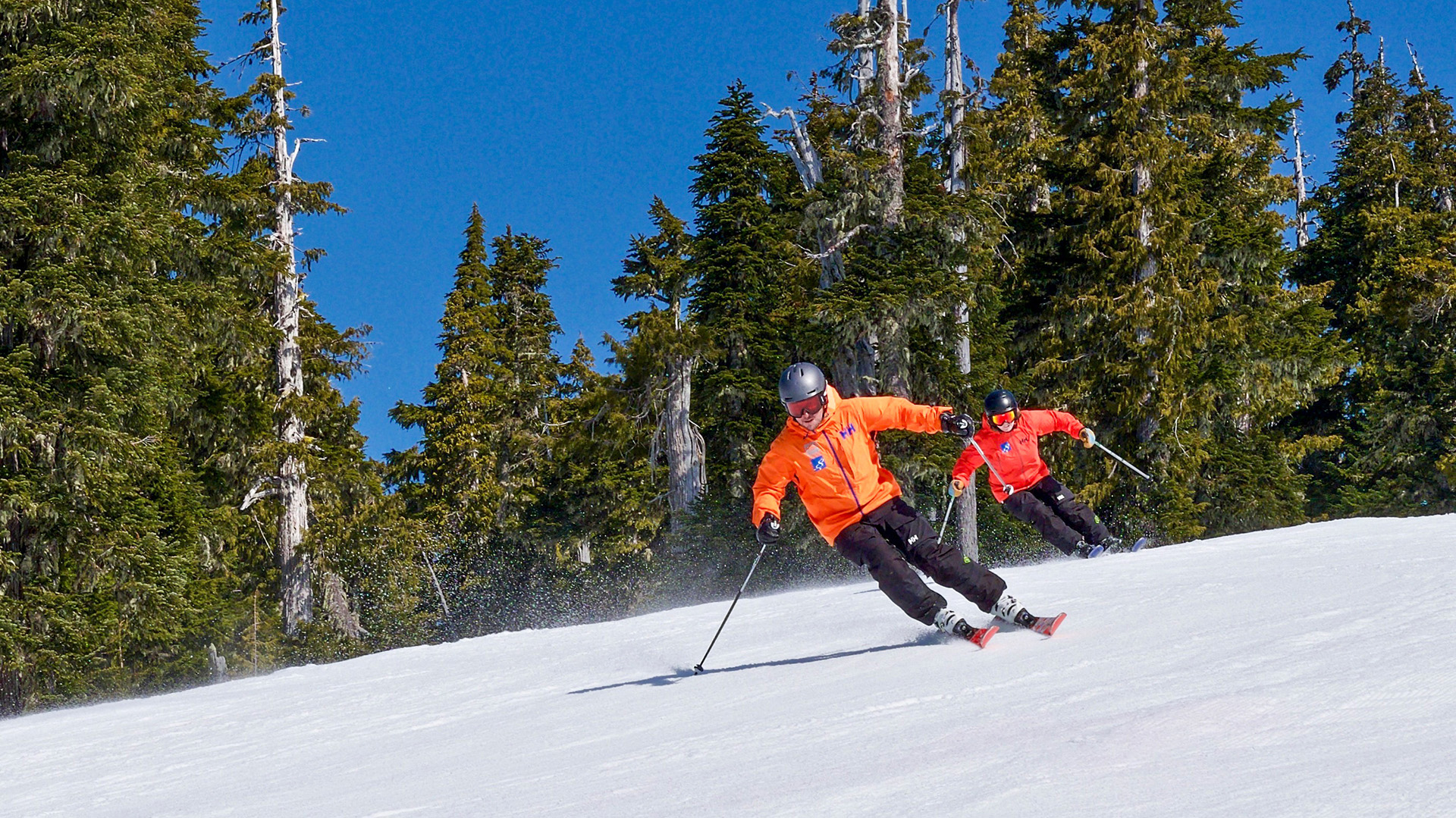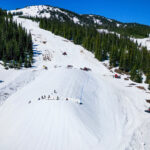
You’ve skied in the same boots for years—the duct tape, the missing buckle, the dings and scrapes, all of it tells a story. You’ve had a long time to get to know your boots and now that you do, you feel as if the three of you are married.
Your skis are another matter. Skis are so fun and playful, you’ll want to get acquainted quickly. But you still need to take enough time to get to know them thoroughly—everything from shape and sidecut, to profile, length and camber. There’s a lot to learn in a short time. Here are a few drills to help you get comfortable.
Topple Turns
Topple turns create a pure carve, enabling you to get used to the sidecut and turn radius of your new skis.
Before you try executing a topple turn, stand balanced evenly on both feet without sliding. Pick up one foot without moving any other part of your body. You will begin to fall over toward the side on which you lifted the foot—that’s toppling. Now try a topple turn while skiing. Lift one foot while sliding and allow the body to fall. As you tip, the ski on the snow will roll, bringing the sidecut of the ski into contact with the snow. You will notice that the ski will begin to turn. Once the turn is complete, place your ski back down, lift the other ski and topple. Repeat this sequence again and again. Notice how quickly the ski turns, and how the radius tightens as you topple further.
Tip: Resist twisting the legs—twisting creates a skidded turn which prevents you from getting to know the shape of your skis.
Smear Turns
Smear turns create a skidded turn, enabling you to get to know how easy it is to rotate your skis on the snow.
As you slide, twist the skis and allow them to steer you across the hill. Keep the ski as flat to the snow as possible, producing a track that’s as wide as the ski is long. It’ll be as if you’re spreading butter, covering as much of the surface as possible with each turn.
Notice how easy it is to turn your skis under you, especially on a rockered ski.
As you practice these two drills, you’ll become familiar with how your skis react to the movement patterns isolated by each exercise. You’ll learn how a ski’s sidecut, profile and flex combine to produce a turn shape dictated by your own movements.




